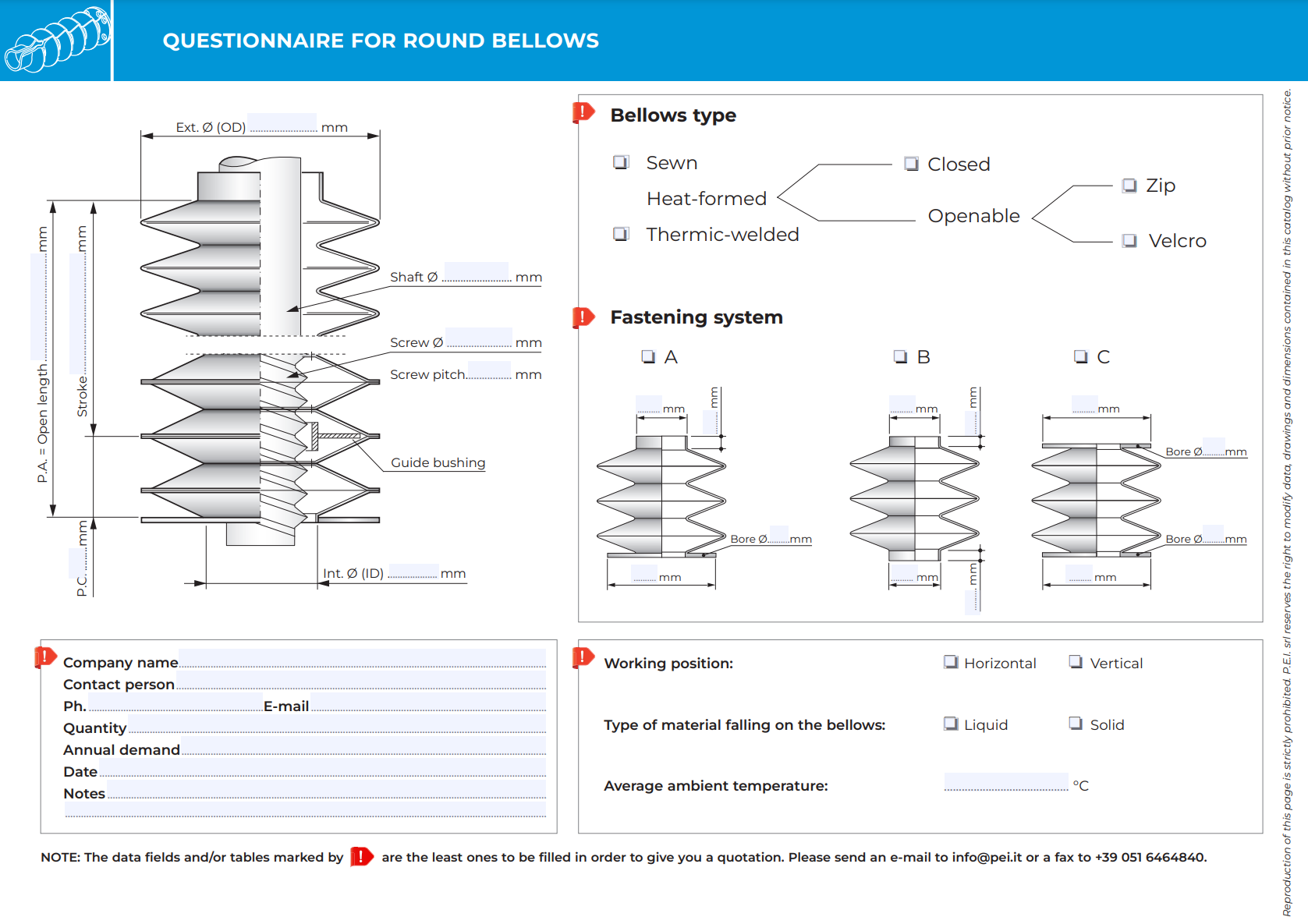Thermic-welded tight bellows
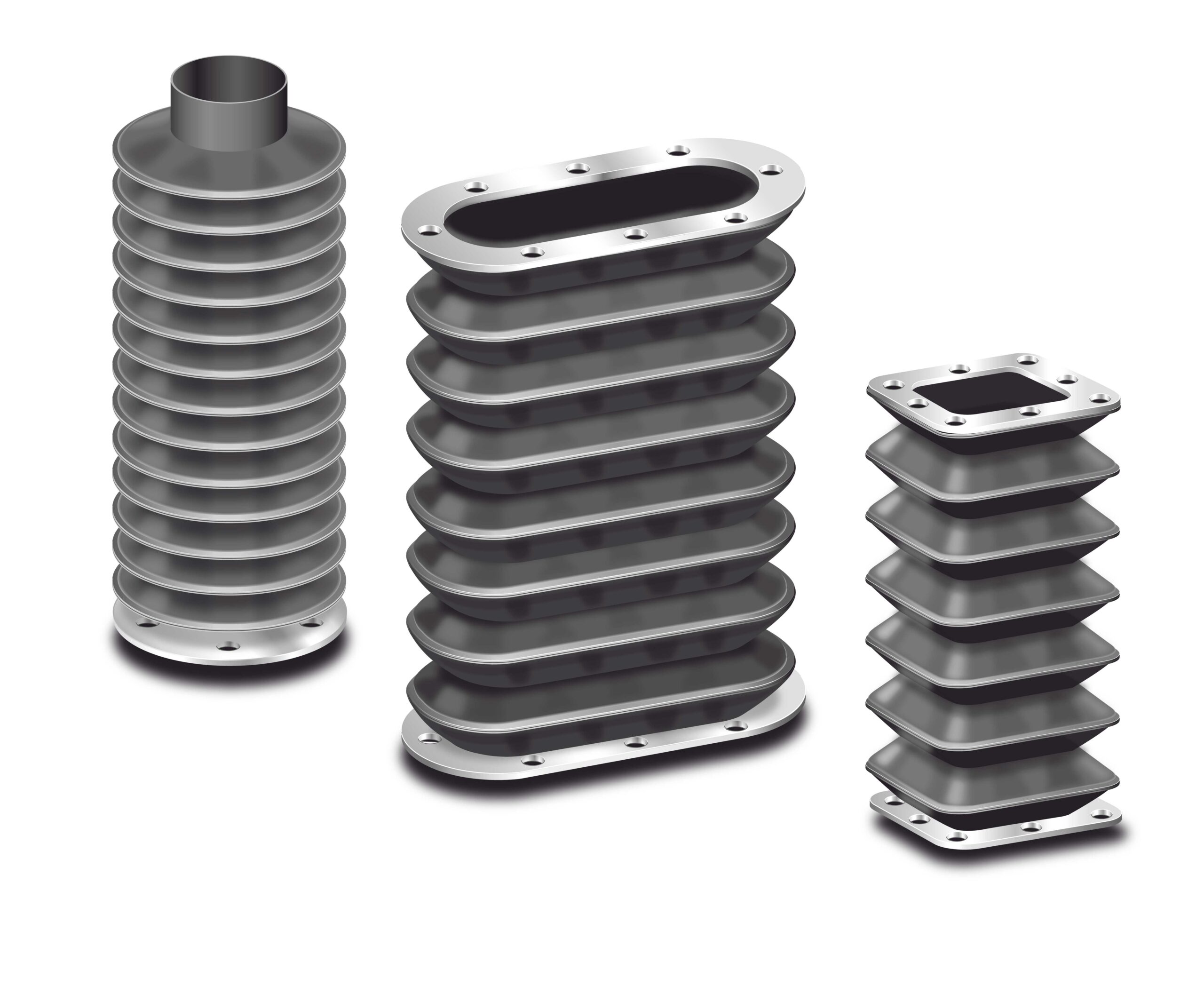
Thermic-welded tight bellows
They are used when leak-tight protection of the components (i.e. screws, shafts, etc.) is necessary
against the contamination made by coolants.
They have good chemical and heat resistance according to the properties of the materials used. Thermic-welded tight bellows are available in various shapes and dimensions.
Small tooling costs for new moulds should be considered, if not already available in stock.
Data
Standard materials
Formulae
Questionnaires
Type A fixing schemes
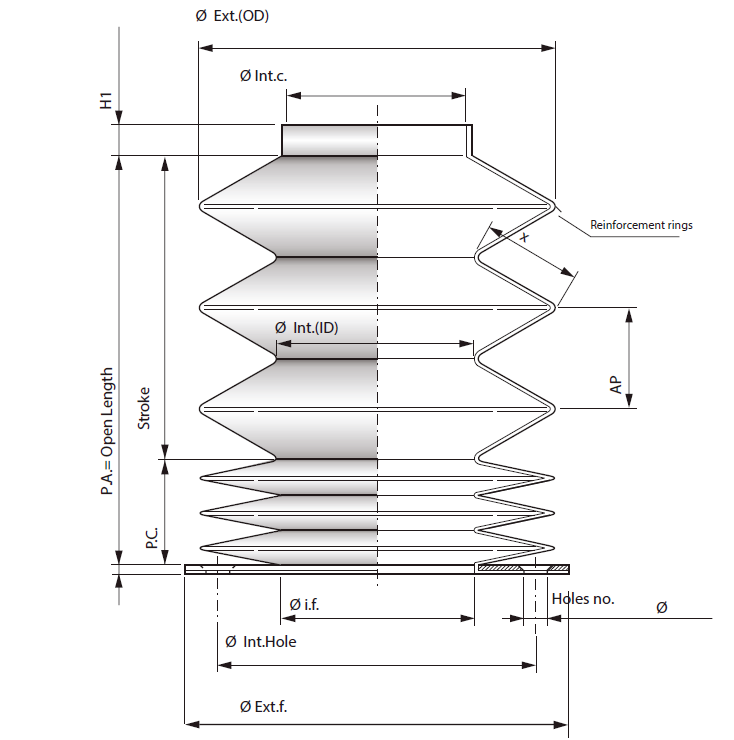
Bellows with the type A fastening system have with collar and a flange
Bellows data:
Ø e. soff. = Circular bellows outer diameter
Ø i.c. = Internal collar diameter
Ø i. soff. = Bellows internal diameter
Ø i.f. = Internal flange diameter
Ø int. holes = Flange hole centre-to-centre diameter
Ø e. f = Flange outer diameter
P.A. = Open length
P.C. = Closed length
Stroke = P.A. – P.C.
AP = Open step
X = Bellows fold height
Type B fixing schemes
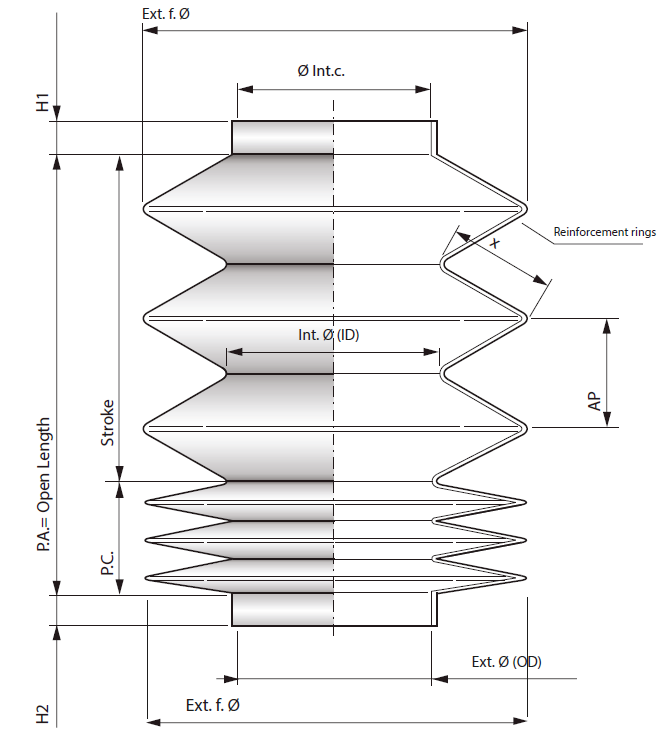
Bellows with type B fastening system have two collars
Bellows data:
Ø e. soff. = Circular bellows outer diameter
Ø i.c. = Internal collar diameter
Ø i. soff. = Bellows internal diameter
P.C. = Open length
Stroke = P.A. – P.C.
AP = Open step
X = Bellows fold height
Type C fixing schemes
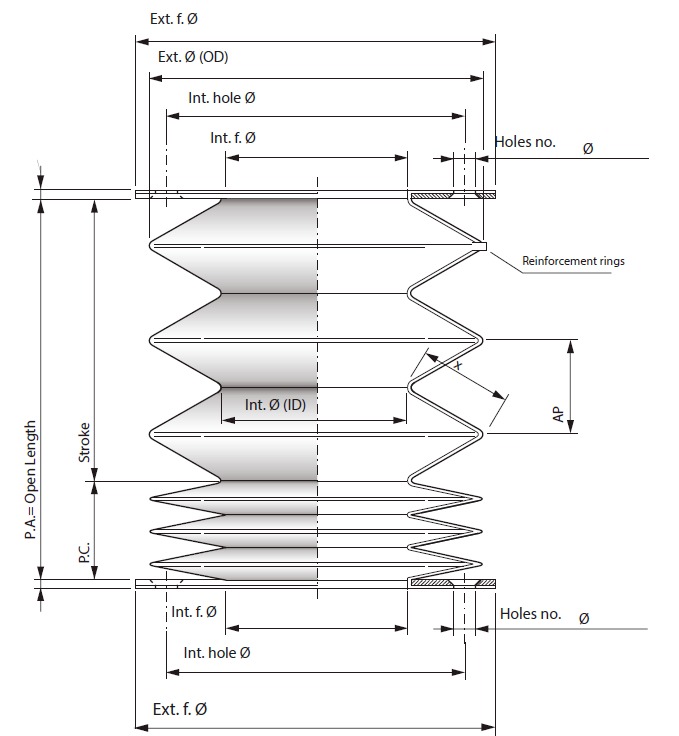
Bellows with the type C fastening system have two flanges
Bellows data:
Ø e. soff. = Circular bellows outer diameter
Ø i. soff. = Bellows internal diameter
Ø i.f. = Internal flange diameter
Ø int. holes = Flange hole centre-to-centre diameter
Ø e. f = Flange outer diameter
P.A. = Open length
P.C. = Closed length
Stroke = P.A. – P.C.
AP = Open step
X = Bellows fold height
Materials available
- Code PEI: TEMAT 018 Polyester coated in PVC thickness 0.7
- Code PEI: TEMAT 019 Polyester coated in PVC thickness 0.5
- Code PEI: TEMAT 153 POLYURETHANE leaf thickness 0.5
- Code PEI: TEMAT 153/S POLYURETHANE leaf thickness 0.7
- Code PEI: TEMAT 156 POLYURETHANE leaf thickness 0.5
- Code PEI: TEMAT 081 Polyester coated in PVC thickness 0.5 – WHITE
Further materials are available on request: consult our technical department.
Formule
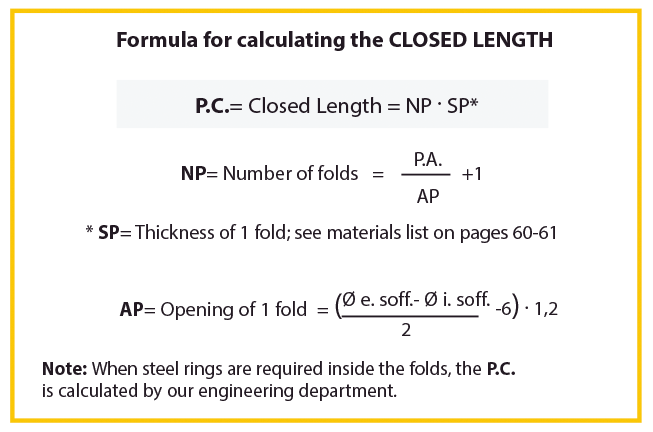
Formulae for calculating closed length
Documentation
